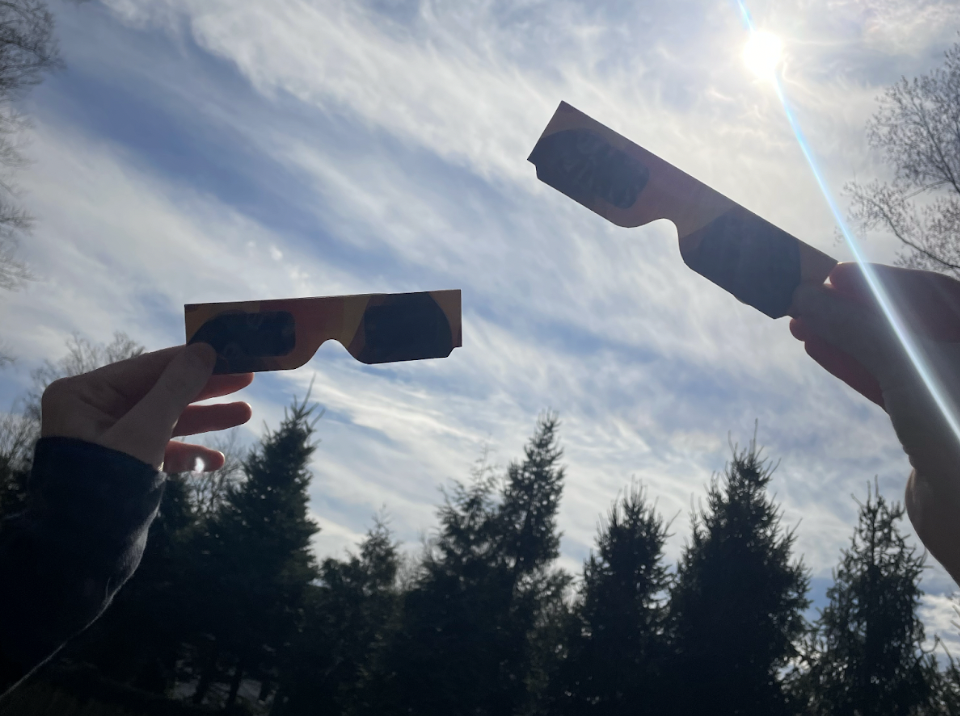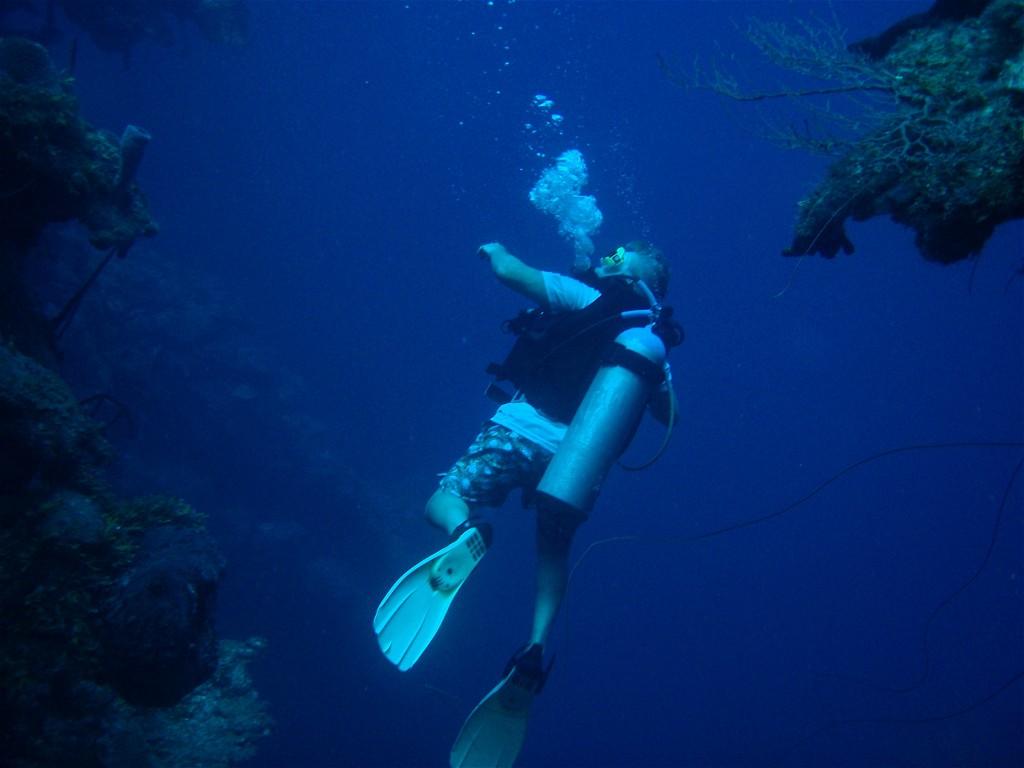Suzanne Kleine ’11
Features Editor
![P8270017[1]](https://www.inklingsnews.com/wp-content/uploads/2010/03/P82700171-400x300.jpg)
Many of those who scuba dive say that they have loved water since they were little. Scuba diving, for Perri Moeller ’10, is a family thing, and vacation can be planned around a great destination for scuba diving.
Clearly, some Staples students feel passionately about scuba diving.
But why?
The main attraction of scuba diving for students is being admitted to a whole other world that’s not accessible when snorkeling.
“When you are snorkeling, you’re really close to the surface,” said Elaine Miller ’12, who has been scuba diving for three years. “You are missing a lot.”
Scuba diving allows the divers to bring a gas tank with them underwater, so that the divers can explore the ocean without the aid of a breathing tube. This allows divers to go down to the bottom of the ocean if they have enough air.
However, scuba diving comes with many risks. When a scuba diver comes up to the surface after a dive, they risk getting “the bends,” or decompression sickness. To protect against this, there is usually a safety stop about 15 feet from the surface. The diver has to wait for about 3 minutes before going to the surface.
Decompression sickness is the diving term for having too much air pressure in a diver’s blood.
If a scuba diver tries to ascend too quickly to the surface, than their blood can develop air bubbles filled with nitrogen. This, in some cases, can cause death.
To prevent decompression sickness or running out of gas, divers must become certified before they are allowed to practice sea diving. Common places of diving certification are the downtown YMCA, or another place where a very shallow pool is available.
To get certified, Perri Moeller ’10, who has been diving since her freshman year, went on “checkout” dives, which is a test dive done in a shallow environment, rather than a pool.
Hers, for example, was done in a rock quarry.
However, Moeller had an unusual experience on her first checkout dive.
A man in her group had come up to the surface quickly, and he got the bends. He had a heart attack in the water, and was rushed to the hospital.
Once a scuba diver becomes certified, they are allowed to explore the deep seas. This allows the divers to interact with, and see, the wildlife not visible when snorkeling.
“I’ve seen a few baby sharks before,” said Miller. “Once I saw a squid.”
Perri Moeller ’10 likens the experience to being in a “zoo without any bars.” When scuba diving, she says, one is “surrounded by and able to interact with the wildlife.”
Moeller also remembers being “stared at by a barracuda.” All the divers spoken to cited seeing and interacting with the animals as one of the major reasons that they enjoy scuba diving.
Zach Slater, an experienced diver, has “seen the coolest things, like sharks, giant turtles, eagle rays, manta rays, and octopi — like all the stuff you see in an aquarium you can see in real life.”
Another element of scuba diving that divers enjoy is the feeling of weightlessness. Slater describes the feelings as “floating in space.” He says that it is possible to do flips underwater.
Slater, who performed at the Pep Rally, and who plans to participate in the Talent Show, sometimes uses his dive time to practice his routines.
“I’ve done the ‘Single Ladies’ dance underwater,” he said.













































